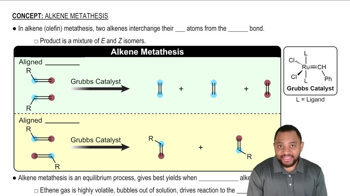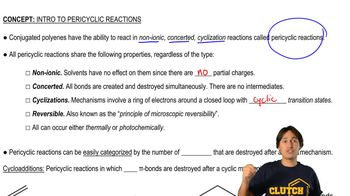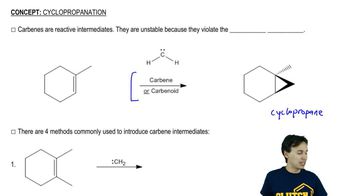Cyclopropanation using any of the reagents discussed here is stereospecific.
(b) Draw a reaction coordinate diagram for cyclopropanation.

 Verified step by step guidance
Verified step by step guidance Verified video answer for a similar problem:
Verified video answer for a similar problem:



 1:49m
1:49mMaster General properties of cyclopropanation. with a bite sized video explanation from Johnny
Start learning